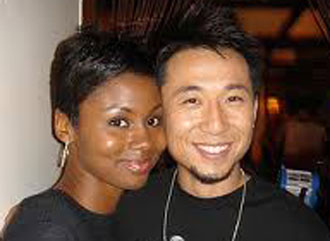Asian women are the undisputed princesses of the online dating scene, at least according to data culled recently from users of the Facebook app Are You Interested.
AYI, along with Tinder, is one of the more popular Facebook dating apps. Users can flip through profiles and click “Yes” to show interest or “skip” to move on. People who receive yeses receive notifications of interest and are given a chance to respond.
After sifting through 2.4 million heterosexual encounters using the AYI app, researchers arrived at several conclusions. Perhaps the least surprising is the fact that on average women receive three times the positive interactions as men. The most surprising is the fact that all men initiate more interactions with women outside their own race.
Perhaps as a corollary to the latter (in view of the fact that Whites comprise about 73% of the likely users of the app while Asians comprise only about 7%), Asian women received the highest rate of responses to their messages of interest, ranging from 26.0% from Black Men to 17.6% from White men to 15.8% from Latino men. Asian men were the only ones who responded at a higher rate to women of another race with 19.0% to messages from Latinas.
By contrast Black women received the lowest rate of responses, ranging from 16.4% from Black men, to 10.3% from Asian men, to 9.1% from Latino men and just 8.5% from White men.
White men enjoyed the highest response rates from all women except Black women. Asian women were the most receptive to advances from White men, responding to 7.8% of their messages, higher than the 6.7%% response rate of White women and 5.8% of Latina women. Black women responded most to Black men at 9.3%.
Black men, who had the lowest response rate from all but Black women, nevertheless received the highest rate of response from Asian women at 6.7%, followed by 2.8% from White women and 2.6% from Latinas. Black women accorded the lowest response rate — 5.4% — to White men.
A 2009 research of online heterosexual dating patterns on OKCupid reinforced the preference enjoyed by White men not only from White women but “even more exclusively” from Asians and Latinas. At the same time, that study also suggested that in general the most intensive interactions tend to take place among people of similar backgrounds, of which race was a major component.
UC San Diego professor Kevin Lewis, who conducted the OKCupid study, found that the site’s members are most likely to contact people who share their own racial background, based on the interaction patterns of 126,134 users in the US during a two-and-a-half month period.
That tendency to initiate contact with someone from a shared race is strongest among Asians and Indians and weakest among Whites, Lewis found. But Lewis also noted a phenomenon that he explains with his theory of pre-emptive discrimination — the people who displayed the most marked tendency toward in-group bias were the most likely to change that pattern if they were contacted first by a person of another race.
“Based on a lifetime of experiences in a racist and racially segregated society, people anticipate discrimination on the part of a potential recipient and are largely unwilling to reach out in the first place,” Lewis explained.
“But if a person of another race expresses interest in them first, their assumptions are falsified and they are more willing to take a chance on people of that race in the future.”
He also noted that the mind-opening effect is usually short-lived. People tend to return to their in-group biases within a week or so.
This phenomenon casts some doubt on the significance of the AYI study. While people tend to respond at a higher rate to men of different races who show interest in them, that high response rate would often not translate into the kind of sustained interest needed to form a relationship.


